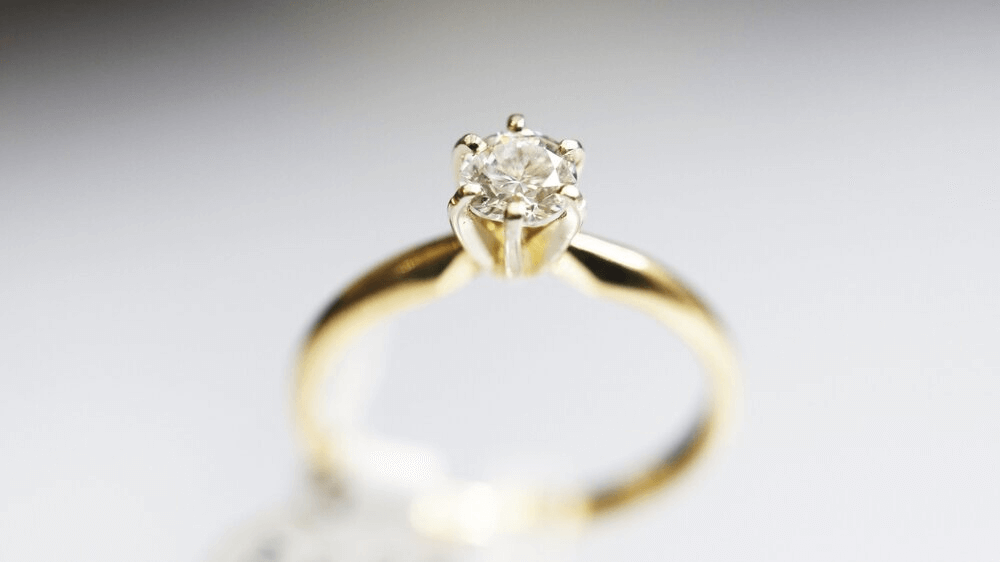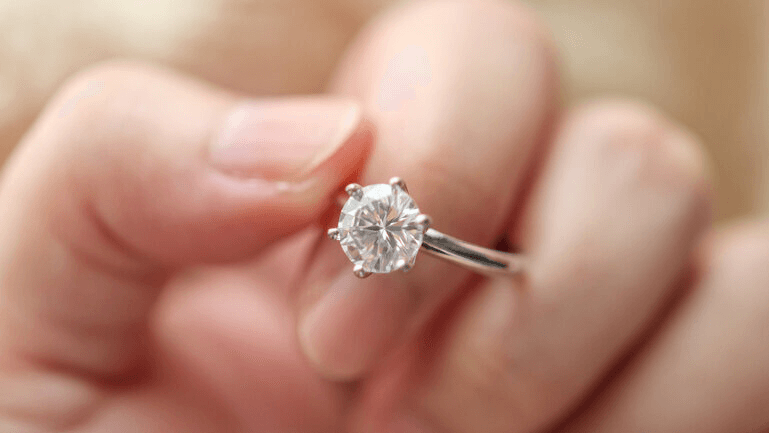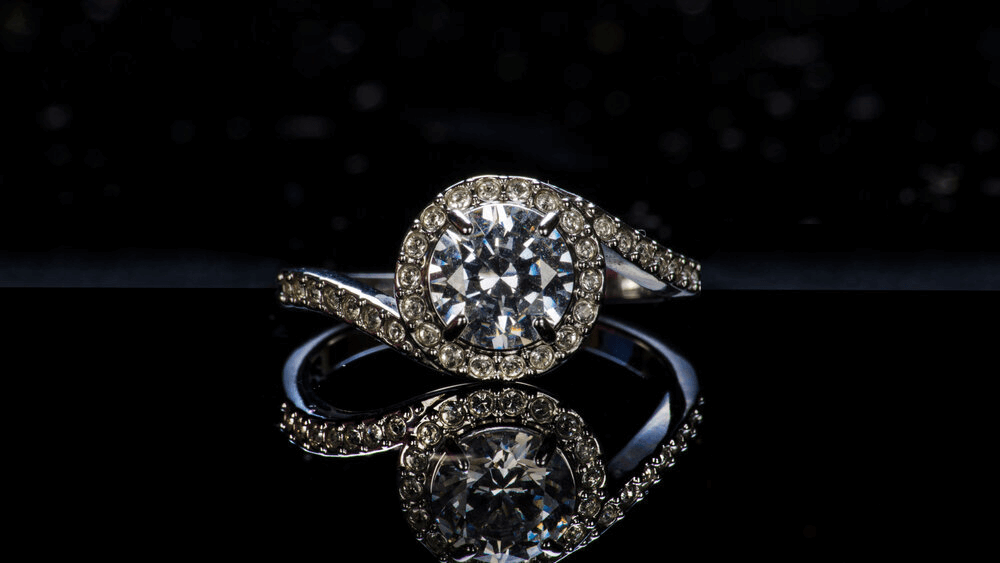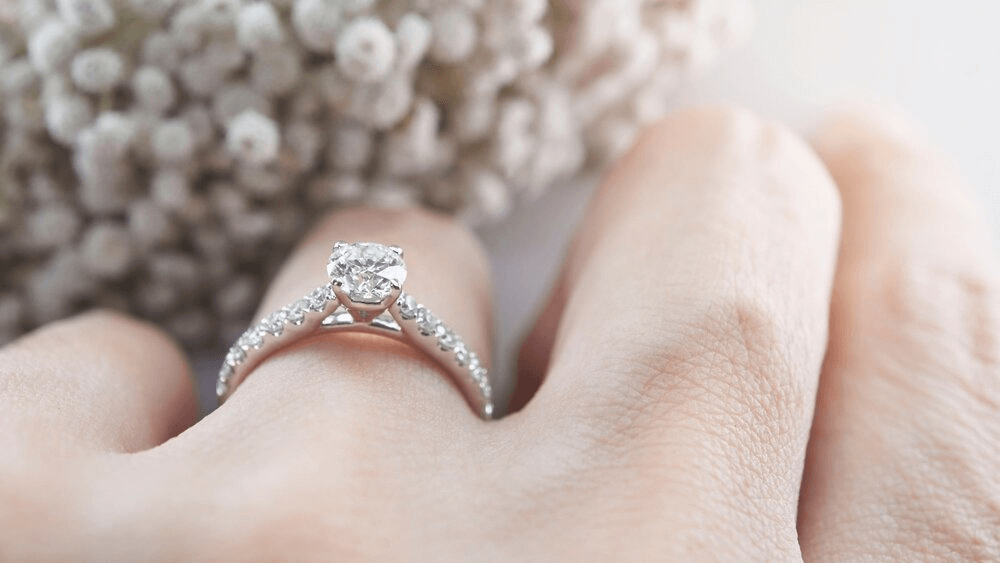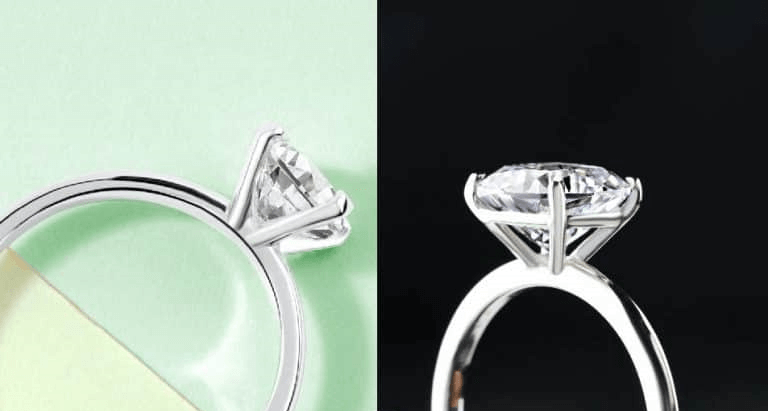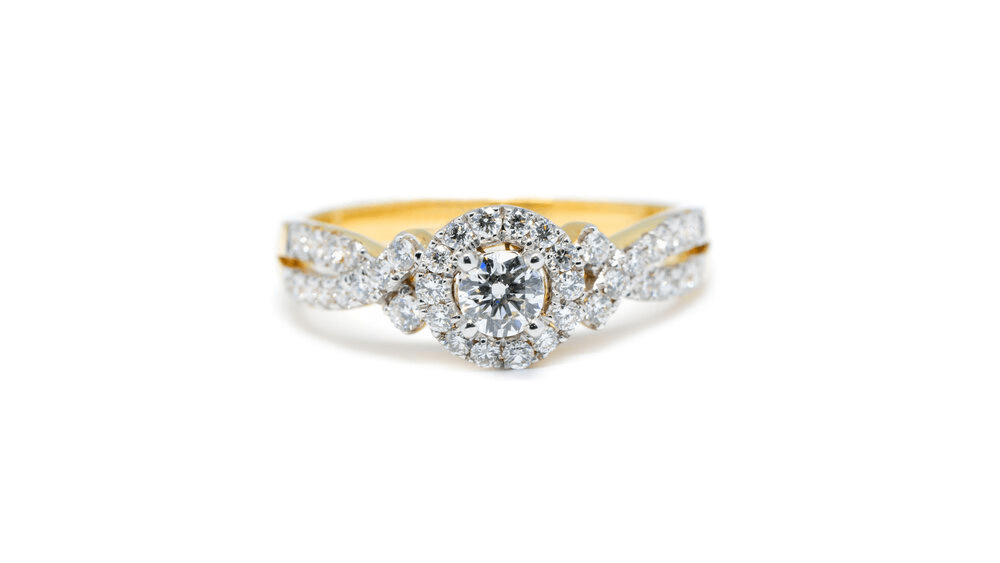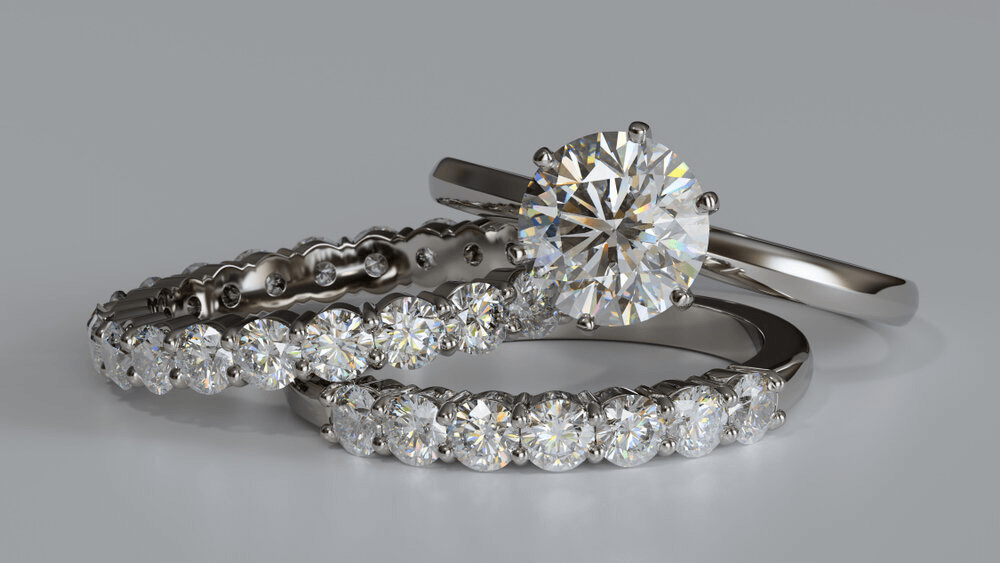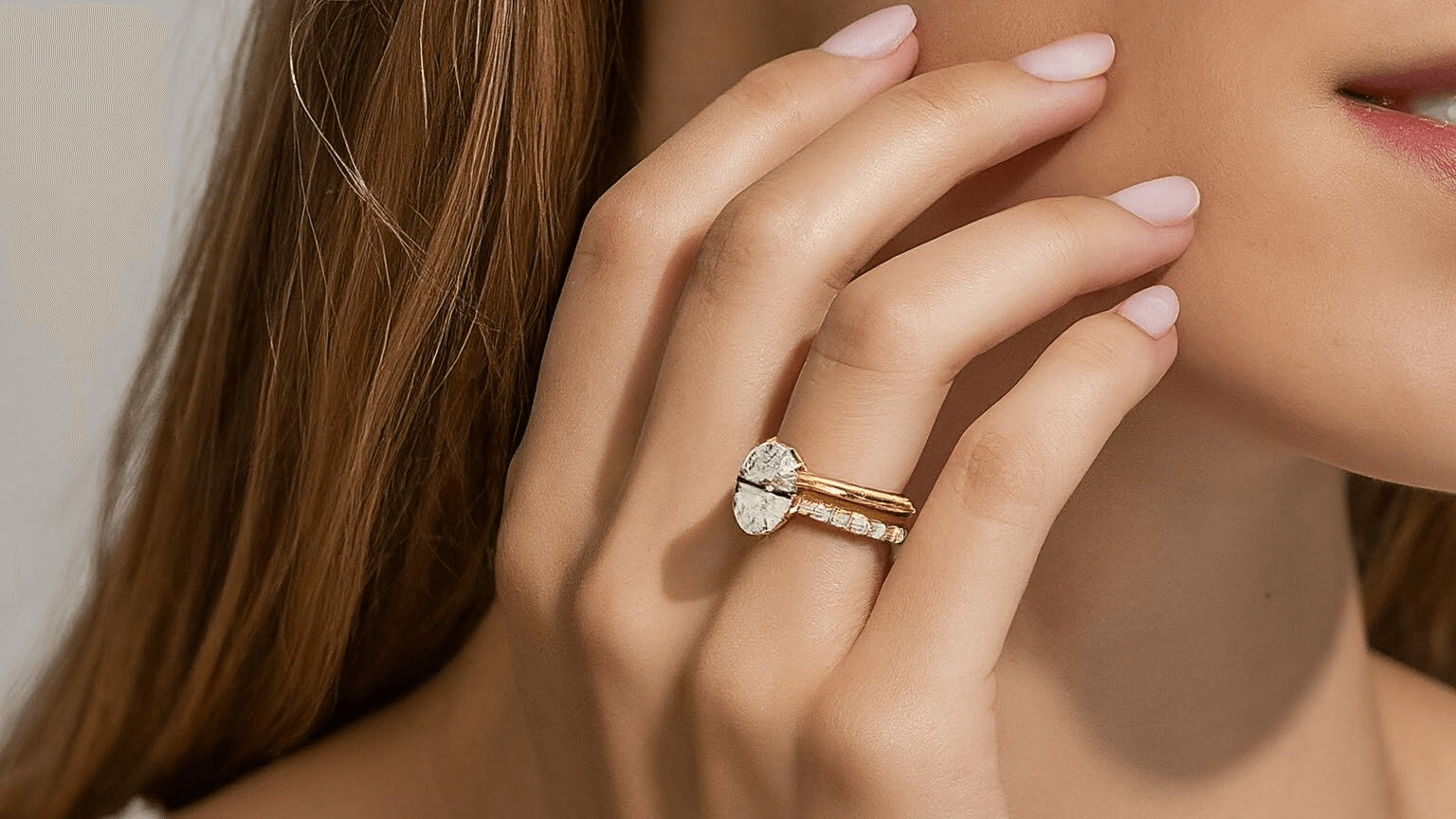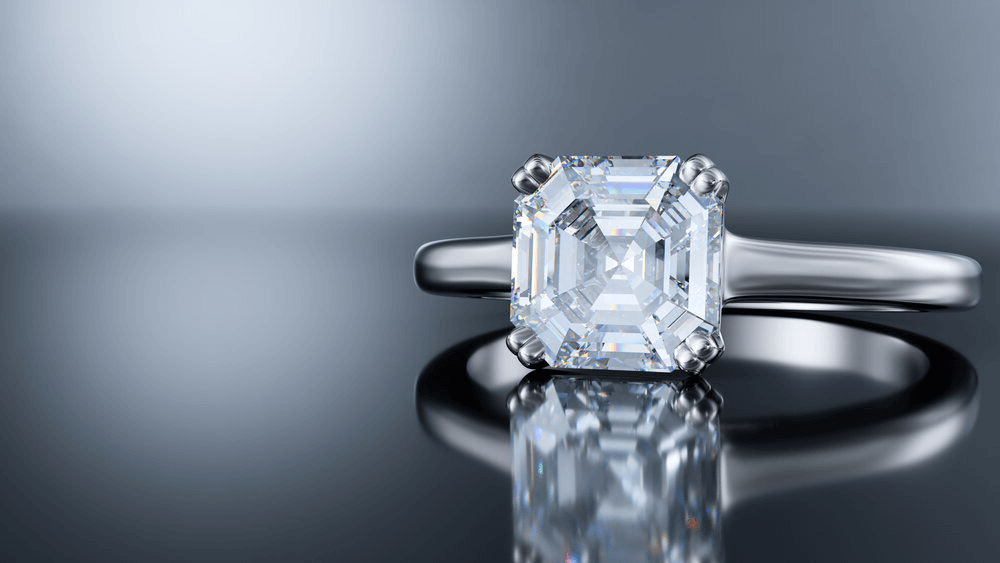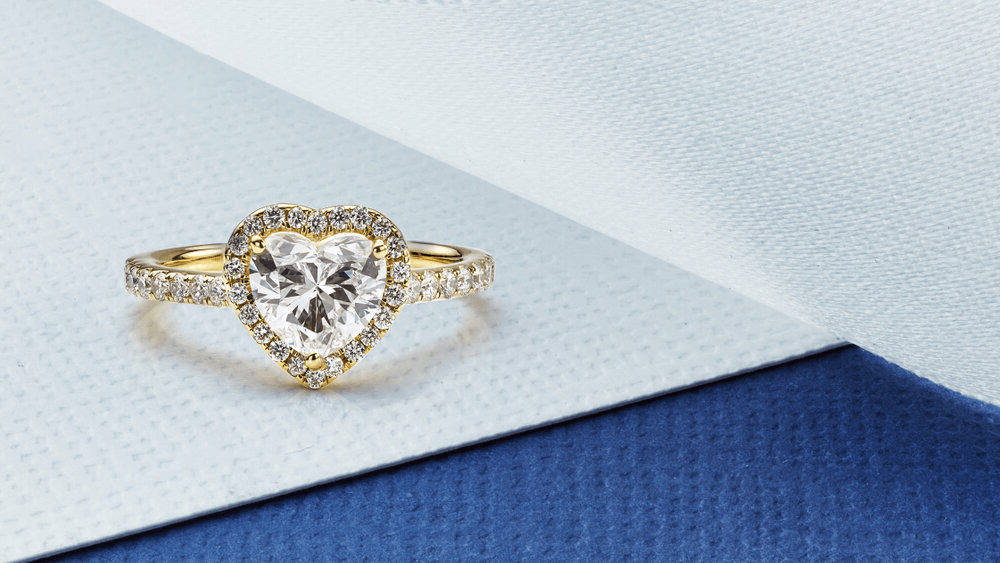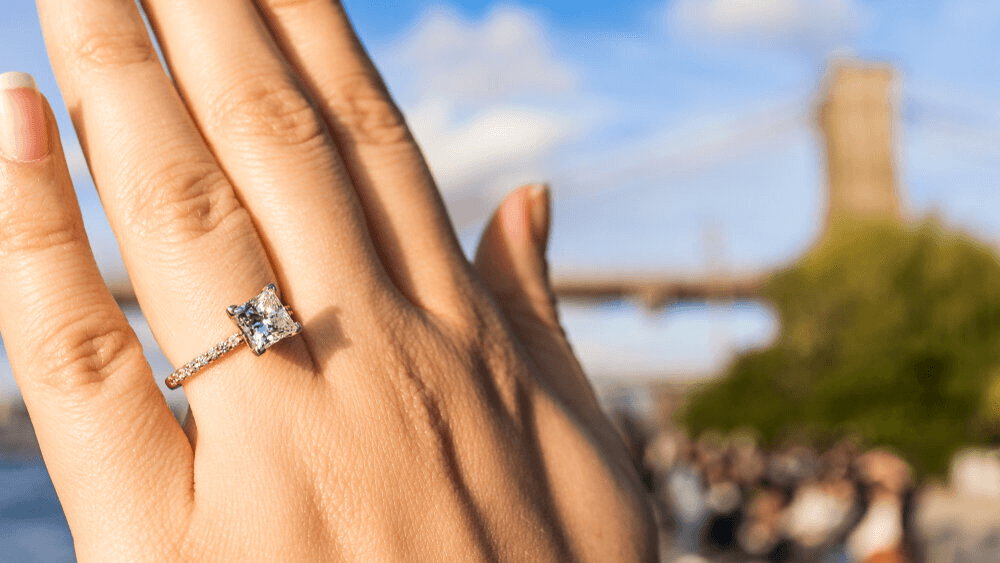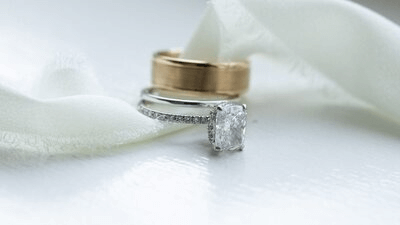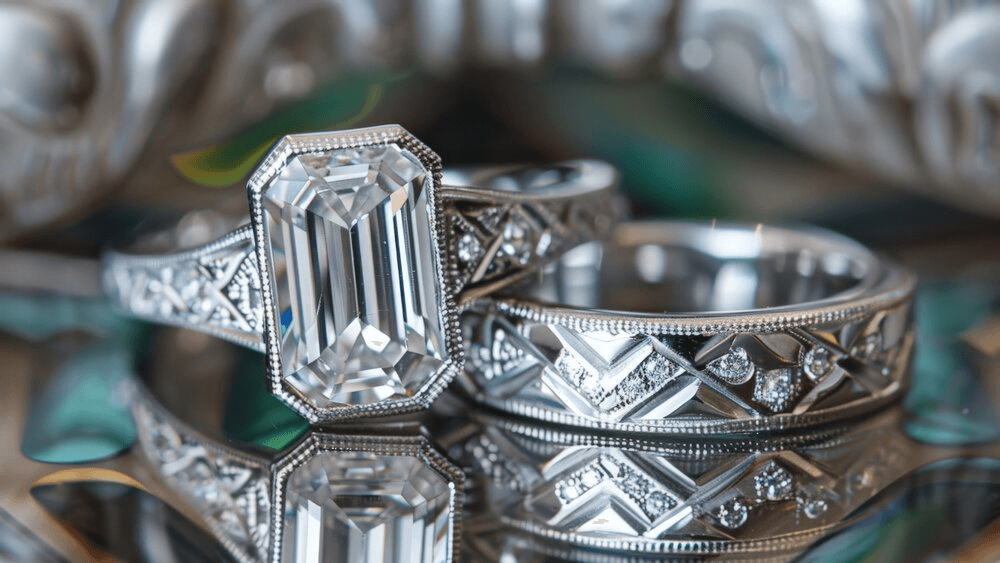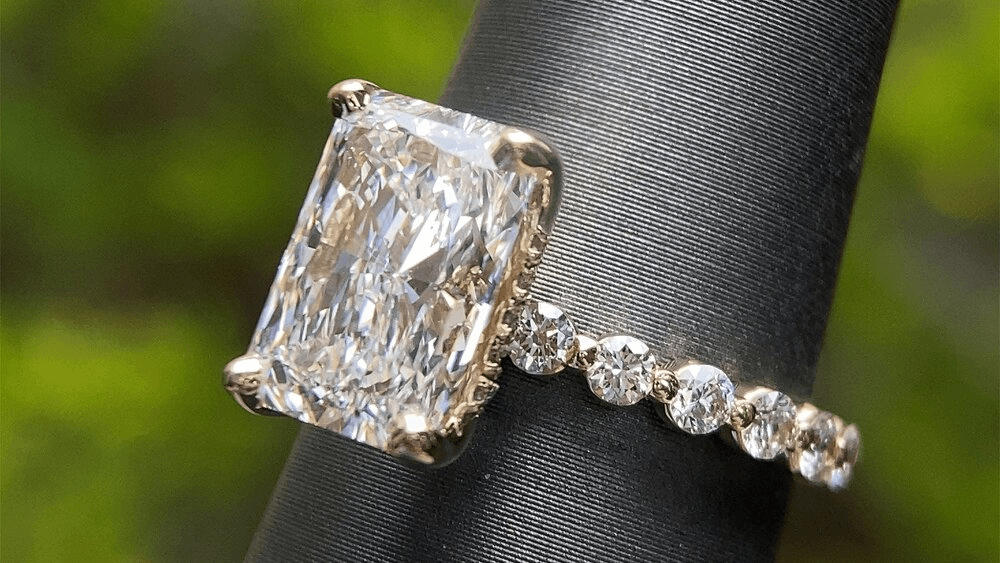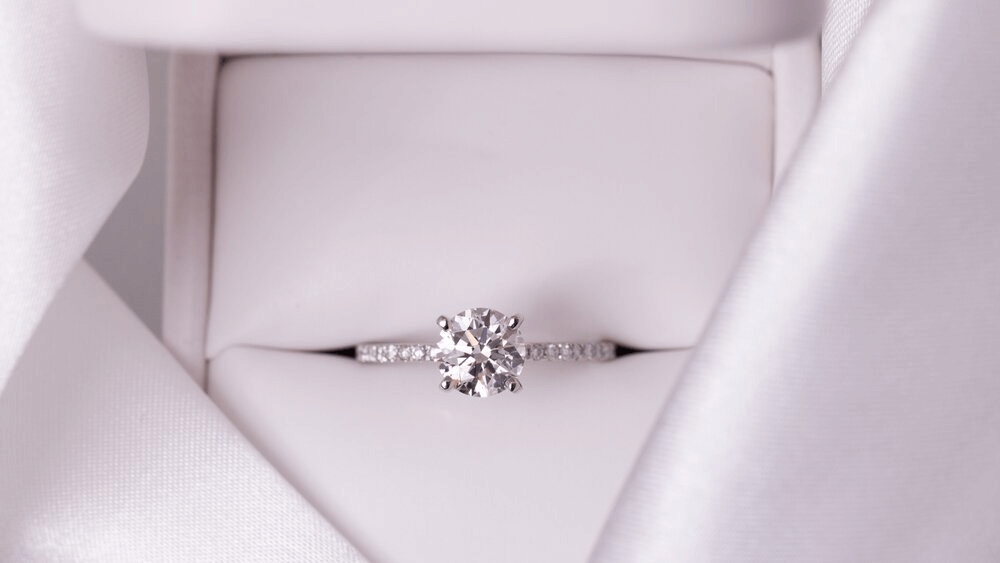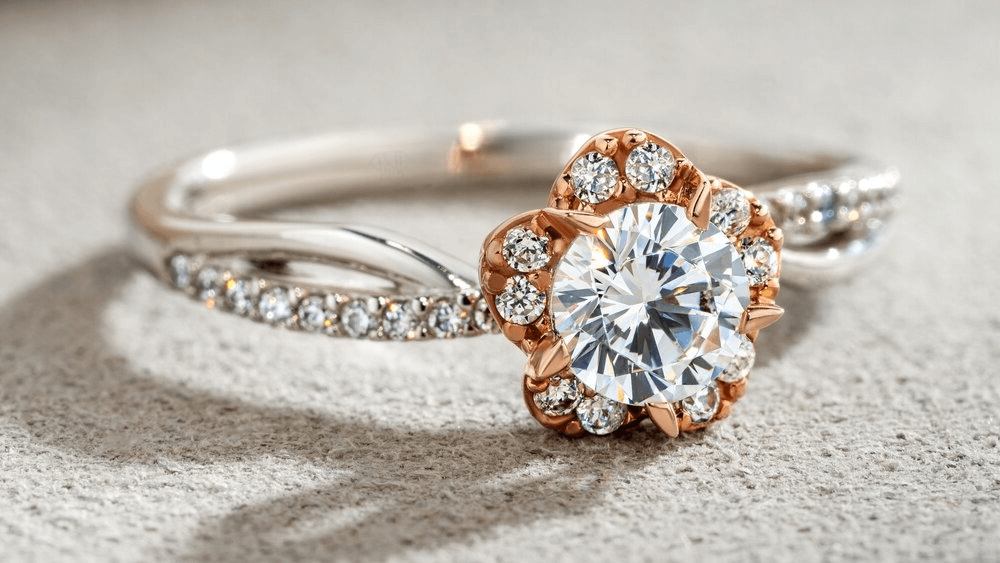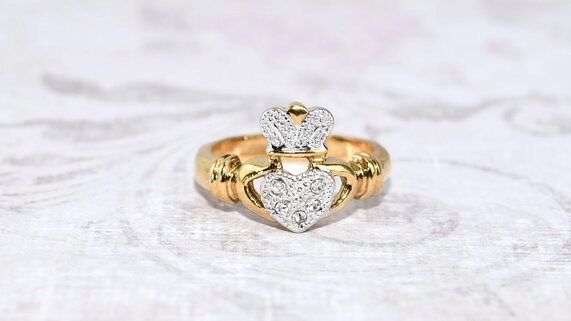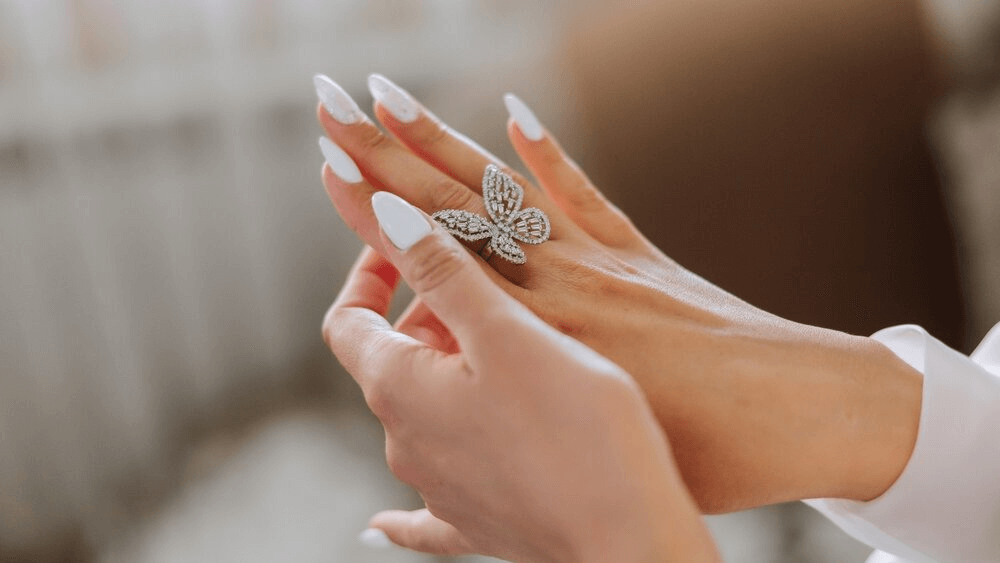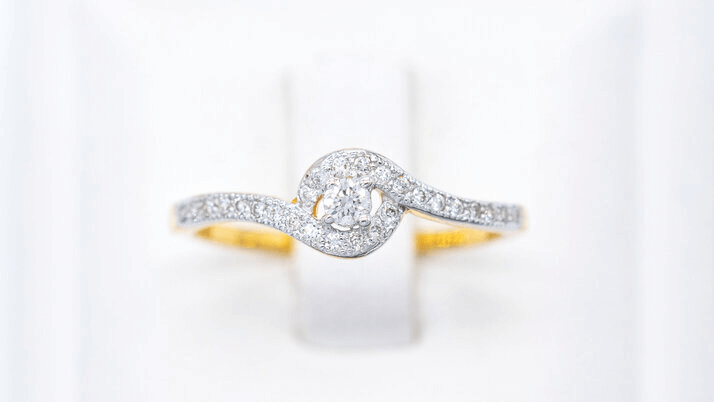Starburst Engagement Rings: The Ultimate Showstopper

By Gary A.

Edited by Olivia H.
Published Aug 8, 2024
Edited on Mar 31, 2025
Whether you’re captivated by the brilliance of a starry night or simply looking for a ring that dazzles with timeless charm, starburst engagement rings offer an extraordinary way to symbolize your unique love story.

Navigate This Guide:
- 6 Quick Tips for Buying a Starburst Engagement Ring
- Introduction to Starburst Engagement Ring
- Understanding Starburst Designs
- The Practicalities
- Choosing the Perfect Starburst Engagement Ring
- Balancing Aesthetics with Durability
- Our Expert Take
- 7 Frequently Asked Questions about Starburst Engagement Rings
Before we dive deeper into the specifics, here are some practical tips to help guide your decision-making process:
6 Quick Tips for Buying a Starburst Engagement Ring
- Tip 1. Understand the Symbolism:
- Be aware of the rich symbolism behind the starburst design and ensure that its meanings align with the sentiments you wish to convey with the engagement ring.
- Consider how these symbols resonate with both you and your partner’s values and beliefs.
- Tip 2. Quality and Authenticity of the Stones:
- Ensure the quality of diamonds or other gemstones used in the starburst setting. Look for clarity, color, carat, and cut (the 4 Cs).
- Request certification for the stones to ensure they are ethically sourced and of the quality promised by the jeweler.
- Tip 3. Craftsmanship and Design Detailing:
- Pay attention to the craftsmanship, especially since starburst designs may involve intricate details.
- Examine the symmetry of the starburst pattern and ensure the rays or lines are evenly spaced and straight.
- Tip 4. Metal Type and Quality:
- Decide on the type of metal that complements both the wearer’s skin tone and the stones used in the design (e.g., white gold, yellow gold, rose gold, platinum).
- Ensure that the metal chosen is durable and high quality, considering the wearer’s lifestyle and any potential allergies.
- Tip 5. Considerations for Engagement Ring Settings:
- Setting Security: Ensure that the setting securely holds the stones in place and won’t be prone to catching on fabrics or accidentally releasing the stones.
- Maintenance Requirements: Some settings might require regular maintenance or checking to ensure that they remain secure and in good condition over time.
- Wearability: Ensure the setting won’t be too high or protruding if the wearer has an active lifestyle or a profession that might risk damaging the ring.
- Tip 6. Budget and Value:
- Establish a clear budget that includes not only the purchase of the ring but also potential additional costs like insurance and future maintenance.
- Ensure that the price is justified by the quality and craftsmanship of the ring.
Now that you’ve got these practical tips, use Jeweler AI below to find the perfect engagement ring that suits your style and budget:
Introduction to Starburst Engagement Ring
Learn how starburst engagement rings combine timeless beauty with modern sophistication in this guide to selecting the perfect celestial-inspired ring.
Whether you’re planning a proposal under a starry sky or can’t help thinking of your beloved when you look up at those gorgeous bursts of light cresting on the horizon, it’s no surprise that the starburst is an incredibly popular engagement ring design.
Striking, perfectly showy, and truly worthy of housing a collection of incredible diamonds, the starburst ring design offers a lot to the right person, provided you’re willing to take on its somewhat impractical silhouette…
Understanding Starburst Designs
The starburst ring design is created using a combination of one larger center stone, and a series of smaller ‘melee’ diamonds arranged around the center stone’s circumference. Unlike the halo design, which requires the diamonds to be arranged regularly around the center setting, the starburst requires these diamonds to be arranged irregularly, creating an effect similar to the bursts of white rays emitted by real stars.
Another thing that separates the starburst from a halo is the variation in diamond size. While halos must feature diamonds of the same carat weight in proportions – if not, the ring will look unbalanced and low-quality – a starburst can utilize melee diamonds of differing weights in order to create that scattered-light effect.
Symbolism and Its Celestial Roots
The meaning behind the starburst ring is clear. While a simple solitaire depicts the singularity of the love between two people, a starburst is fierier – it represents the passionate, incendiary, once-in-the-universe type of love that your typical engagement ring just falls short of. Magnificent, beguiling, and enough to keep anyone gazing for hours at a time, the right ring will look like it was plucked from the skies the moment she said, ‘Yes!’
The Practicalities
Starburst rings seem like the perfect idea at first – and, for some people, they are. The main thing anybody considering a starburst engagement ring needs to understand is that, compared with other, more popular designs, they can be a little tricky to wear.
Think of a halo. While the stone is completely surrounded by (at least) one row of melee diamonds, they’re arranged in a way that keeps the edges of the ring smooth. In other words, since each of those diamonds is placed neatly alongside the next,
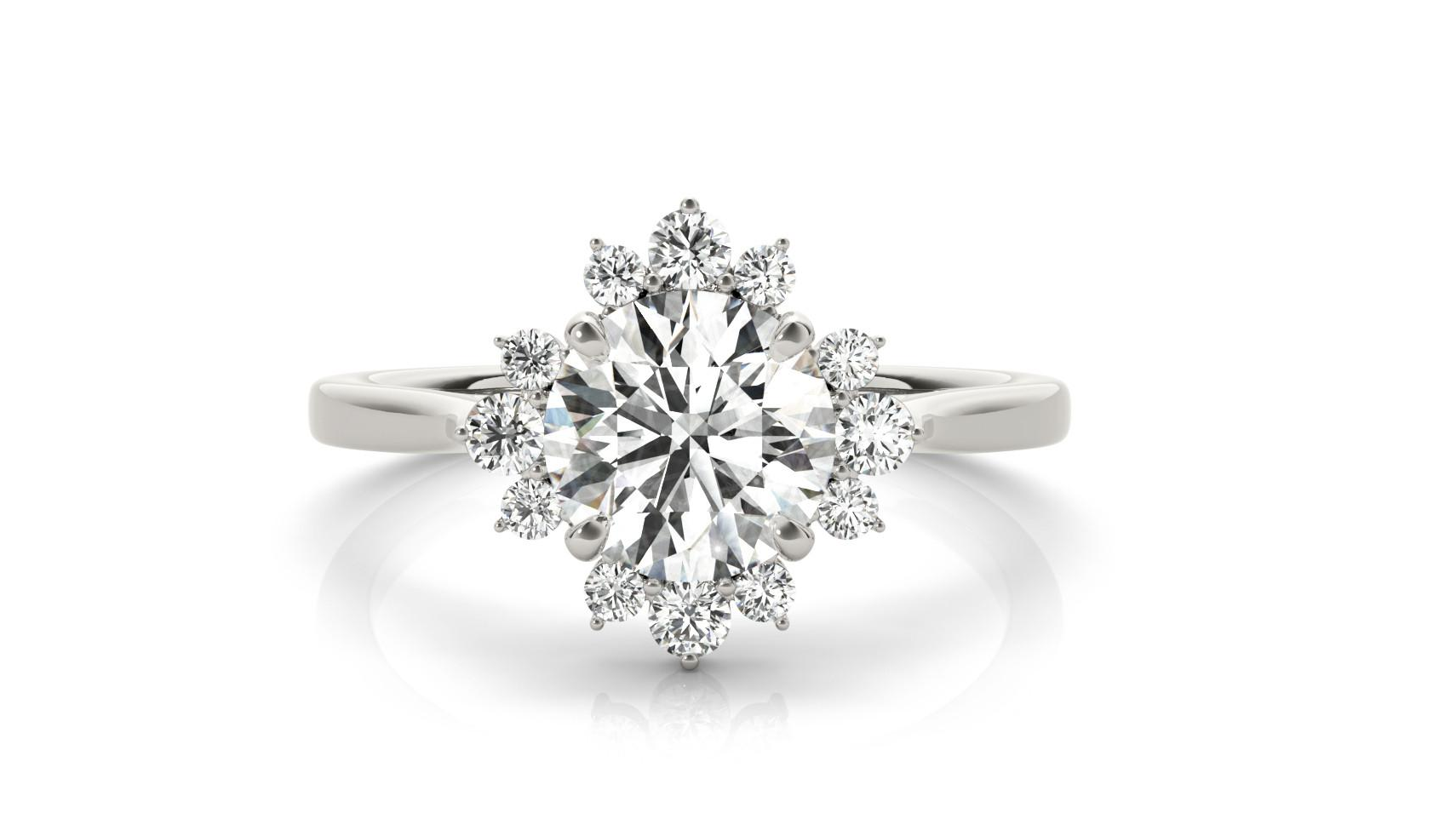
Choosing the Perfect Starburst Engagement Ring
So, you know you want to send your love into the stratosphere when you get down on one knee, but how do you even find an engagement ring that lives up to the expectations set by the constellations?
Here are your practical pointers.
Understanding Diamond Clarity and Color
Clarity and color are very important. Both relate to a diamond’s visual quality – the presence or absence of any flaws (also known as inclusions), and the presence or absence of any discoloration (a yellow or, in worst-case scenarios, a brown hue that develops naturally in diamond during their formation).
If you want your star to shine as bright as Polaris, then you’ll want to make certain you’re getting an eye clean diamond. In other words, you want a diamond that looks flawless.
Thing is, you definitely don’t want to pay for genuine flawlessness. Take a look at our guide to choosing eye clean diamonds to find out how to get the most bang for your buck.
Color is a similar story. Despite the fact that visible color in a diamond does not impact its ability to sparkle brightly, it’s still the case that noticeable discoloration will severely bring down the visual quality. Who ever heard of a yellow star? Even if they exist, we’re willing to bet they won’t catch on like the traditional, bright, white stars flickering in the night sky. Find out everything you need to know about diamond color here.
The Significance of Cut and Carat in Starburst Settings
Carat is always significant, whether you’re designing a simple solitaire or a one-in-a-million starburst engagement ring. But, despite the fact that getting a high carat is usually at the top of most shoppers’ lists, we would encourage you to be a little cautious here.
If you’ve got a particularly large diamond on your mind, don’t lose sight of the end product. Those starburst accent diamonds will take up a lot of real estate on your partner’s finger, so pairing them with a large diamond may create something a little too showy.
For a starburst setting, a 1 carat diamond (or thereabouts) will be perfect. 1.5 carats will still fit well, but avoid going beyond the 2 carat weight, unless you’re willing to ‘lose some weight’ from the starburst setting. Consider option for a cluster side ring, rather than one with a full ‘halo’ of accent stones.
Finally, cut. The most important of all the Four Cs, Cut is what will give your diamond that star-like twinkle. Go for a GIA grade of Excellent or Very Good, but no lower on the scale. It’s never worth sacrificing cut quality.
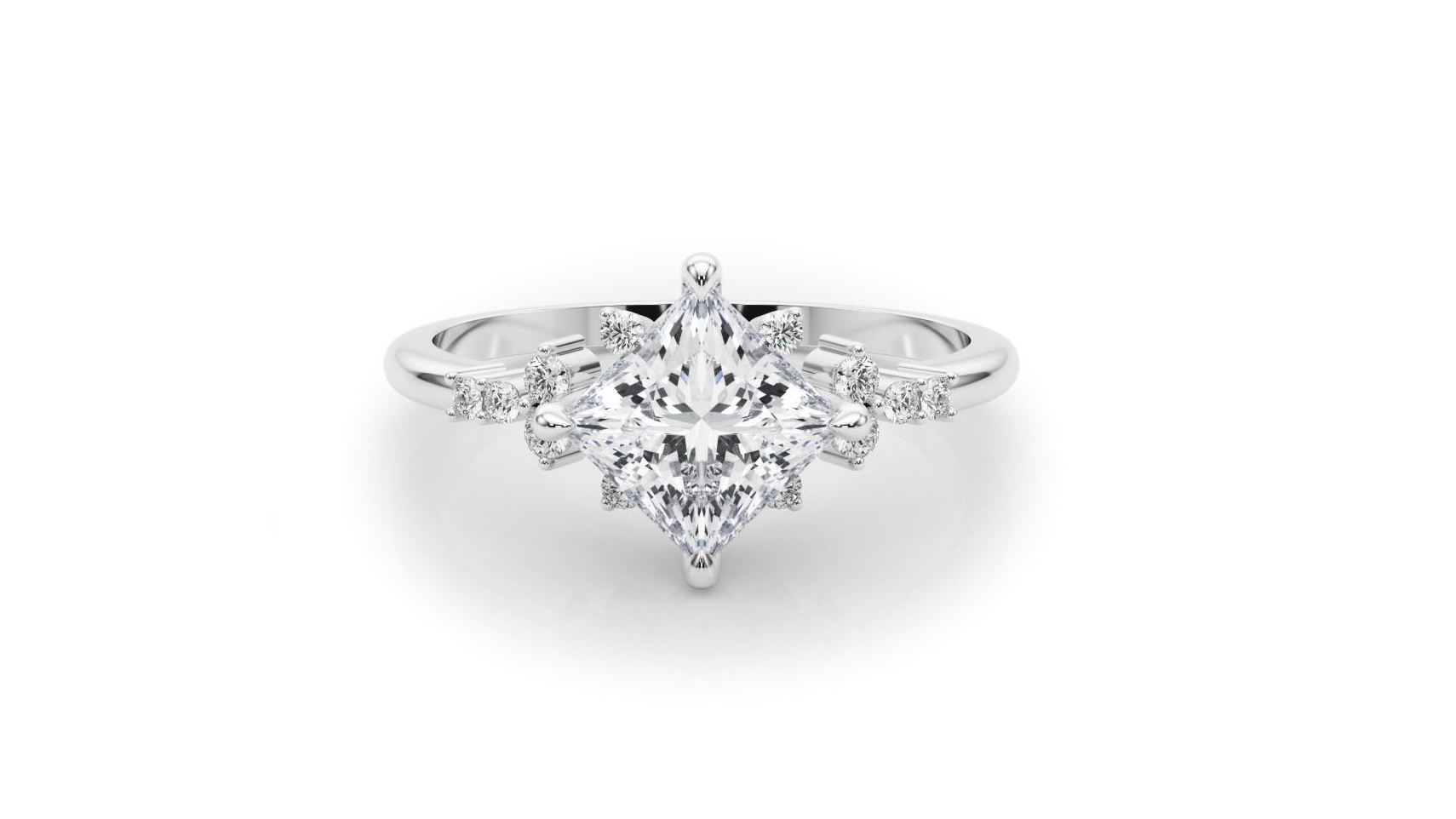
Metal Choices: From Classic Gold to Contemporary Platinum
While yellow gold and rose gold are winning options for almost any engagement ring style, achieving that realistic, starburst vibe is a job reserved only for white gold or platinum. Both metals offer a magnificent sheen that will look as though it’s been plucked straight out of the night sky, and really accentuate the stark, clear coloring of those diamonds.
Platinum is stronger and lower maintenance, but white gold is more affordable and, with a low-effort routine of visiting the jewelers for re-plating, it doesn’t need to be considered ‘high maintenance’.
Balancing Aesthetics with Durability
Remember that the more irregular the layout of your accent diamonds, the more likely the ring is to snag. While rings with very scattered, organic outer edges are spectacular, a lot of people prefer to opt for a design like a halo, since it’s more aerodynamic and less likely to annoy the wearer when they’re searching around inside their handbag, putting on a sweater, or running their hands through their hair.
This also means that, the more prominent those accents are, the more vulnerable they are to knocks and scrapes. If an accent diamond is floating along that outer edge, it’s much more exposed.
A bypass engagement ring can be a great compromise. The design allows you to capture the dazzling essence of a star locked in a swirling galaxy, without creating so many irregular edges.
Maintenance Tips for Starburst Rings
Make sure you get the ring checked regularly. Prawns are a lot stronger than they look, and they’re a lot more capable of holding an expensive diamond in place than some shoppers realised, but they’re not impervious to damage. A jeweller can keep an eye on those prongs, spot any signs that they might be working loose, and ensure that they are embracing your diamond tightly.
A jeweller can also make sure that no dust or grime is building up in the more intricate crevices of the ring’s design. Pavé and other fine details can show signs of daily wear sooner than plainer ring styles, but a regular clean will keep that sparkle bright.
Finally, avoid wearing the ring during any exertive activities. Gardening, sports, spring cleaning and DIY are all good times to put that ring back in its box and wait for the time when the stars can come out again.
Our Expert Take
From star gazing to going starry eyed, so many of the most romantic things aren’t found on Earth, but in the skies above. Designing A starburst engagement ring is a surefire way to send your partner’s heartbeat skyrocketing, put their head in the clouds, and sweep their feet off the very face of the earth.
As with any engagement ring design, there are certain pros and cons to take into account, but don’t let the cons put you off if a starburst engagement ring is what you want to create. Some of the most beautiful rings we’ve seen look as though they were forged in the furnaces of Venus, and their lucky owners are very happy to wear them day in and day out.
7 Frequently Asked Questions about Starburst Engagement Rings
- Q: What is a starburst engagement ring?
- A: A starburst engagement ring features a central gemstone surrounded by smaller diamonds or gemstones set in a pattern that radiates outward, resembling a starburst. This design often incorporates intricate details and a vintage aesthetic.
- Q: Can I customize a starburst engagement ring?
- A: Yes, starburst engagement rings can be customized in various ways, including the choice of central gemstone, type of metal, and specific design elements of the starburst pattern to suit personal preferences and styles.
- Q: Are starburst engagement rings more expensive than traditional rings?
- A: The price of a starburst engagement ring can vary widely based on factors such as the size and quality of the central stone, the number and quality of surrounding stones, and the complexity of the design. While they can be more intricate, they don’t necessarily have to be more expensive than traditional rings.
- Q: How do I care for a starburst engagement ring?
- A: Care for a starburst engagement ring by regularly cleaning it with mild soap and warm water, avoiding harsh chemicals, and removing it during activities that could damage the ring. It’s also recommended to have it professionally inspected and cleaned periodically.
- Q: Are starburst engagement rings suitable for everyday wear?
- A: While starburst engagement rings can be suitable for everyday wear, their intricate designs may require extra care to prevent damage. Choosing a design that minimizes the risk of snagging and ensures the security of all gemstones is important for durability.
- Q: Can a starburst engagement ring be paired with a wedding band?
- A: Yes, a starburst engagement ring can be paired with a wedding band. Depending on the ring’s design, you may choose a custom band that complements the engagement ring’s shape or a more traditional band that sits flush against it.
- Q: What types of metals are best for starburst engagement rings?
- A: Starburst engagement rings can be crafted from a variety of metals, including gold (yellow, white, or rose), platinum, and palladium. The best choice depends on personal preference, lifestyle, and budget considerations.
Explore the cosmos of elegance with Jeweler AI‘s starburst engagement rings, tailored to your celestial dreams.
FOLLOW-UP GUIDE SERIES





